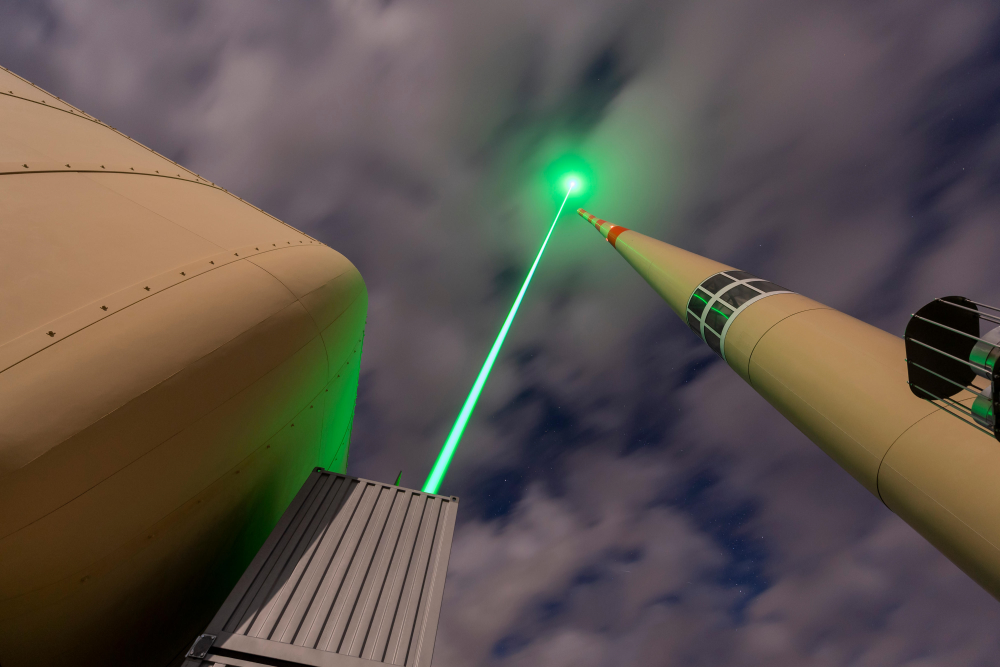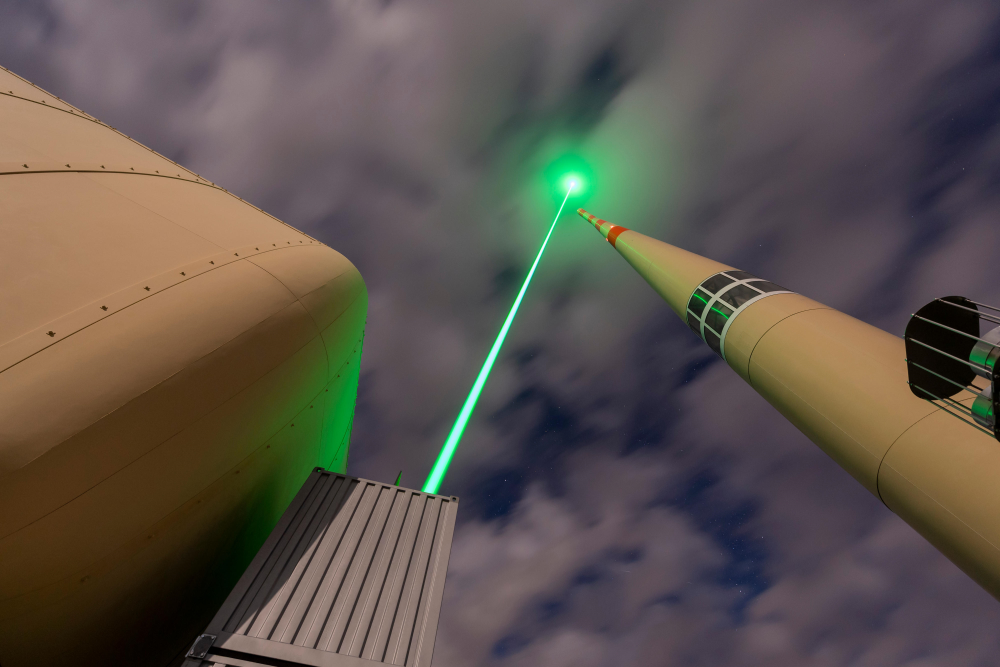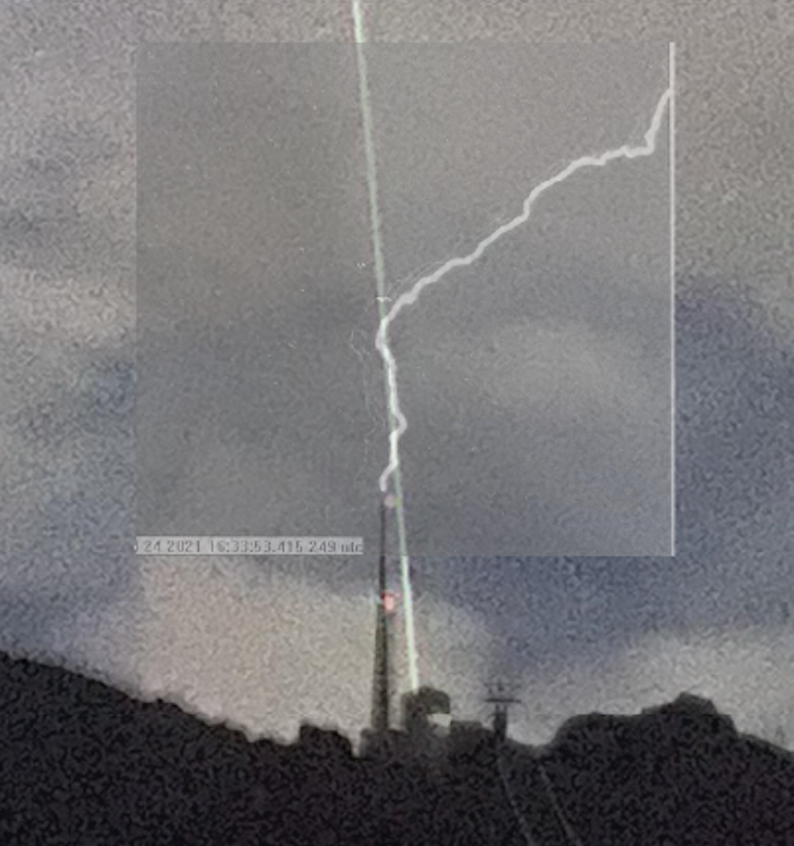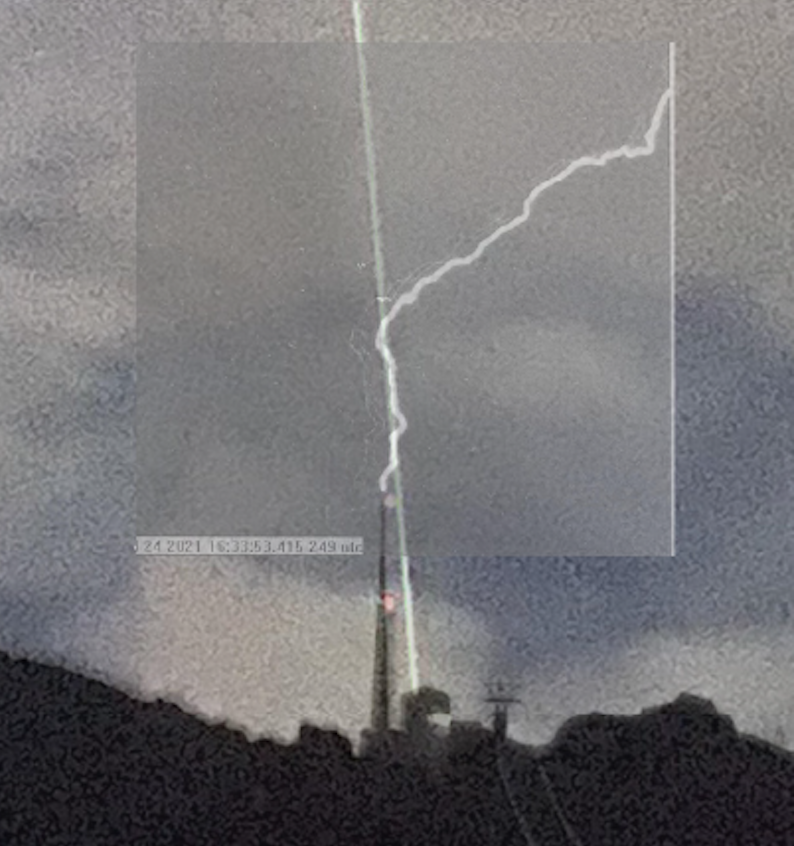A Laser-Based “Lightning Rod”
When Benjamin Franklin launched his famous kite into a stormy sky in 1752, he provided a preferential path for the charge accumulated in the clouds to reach the ground. A 21st century update on Franklin’s kite is a laser fired up into the atmosphere. Stationed on a Swiss mountain, researchers have shown that the beam from a high-powered laser provides a preferential path for lightning bolts [1]. Such a laser system could one day provide lightning protection to sensitive facilities, such as airports, rocket launchpads, and wind farms.
The damage caused by lightning—estimated to cause billions of dollars of damage per year in the US—can be reduced by controlling where the electric discharge goes. “Currently, the only available protection against lightning is a classical Franklin lightning rod,” says Aurélien Houard, a member of the research team from the École Polytechnique in Paris. These tall metal rods are good conductors that provide a path of least resistance from the clouds to the ground. But this protection is only afforded to objects within a certain distance of the rod, given roughly by the rod’s height. Building a higher rod would protect a larger area, but this solution is not always practical.
“The idea of using a laser is to create an extension of a metal rod that could, in theory, be several hundreds of meters or a kilometer high,” Houard says. Unlike a metal structure, the laser “rod” could be turned on only when the skies are threatening.
Laser-based lightning guidance was first proposed in 1974, and several experiments have confirmed the basic concept in a lab setting. However, demonstrating the system in the field has proven more difficult. Some tests were unlucky and never had a storm come close enough to the laser. “Lightning is very unpredictable,” Houard says. “You may have to wait a very long time to see a strike.” And just seeing one event isn’t enough: researchers need to build up the statistics to be sure that the laser is having a noticeable effect.
To increase their chances, Houard and his colleagues performed their laser experiment in one of the most lightning-prone spots in Europe: Säntis Mountain, on the northeastern side of Switzerland. This 2500-m-high (8000-ft) mountain is capped by a 30-story-tall telecommunications tower that is struck by lightning about 100 times per year. During the summer of 2021, Houard and colleagues installed a car-sized terawatt laser on the mountain with the goal of testing whether lightning paths could be guided by the laser light.
In the beginning of their campaign, the researchers relied on weather reports to warn them of approaching thunderstorms, but the forecasts were often wrong, and the team missed some opportunities. “We decided to sleep on the mountain to be ready to start the laser if lightning came in the night,” Houard says. They also had to alert the nearby airport whenever they planned to fire the laser, as there was a risk that the light could damage the eyes of people in airplanes flying overhead.
When the meteorological conditions were ripe, the team aimed their laser into the sky and fired picosecond pulses at a repetition rate of 1 kHz. By focusing the infrared laser light at a point near the top of the tower, the researchers reached the intensity necessary to produce a nonlinear optical effect in which the laser light divides up into multiple, thin “filaments” that propagate without spreading out (see Viewpoint: Air Waveguide from “Donut” Laser Beams). These high-intensity streams heat the air, creating channels of ionized gas, or “plasma,” that can be as long as 50 m. Such plasma channels are conducting, like a metal rod, so they are expected to offer a preferential path for lightning.
Over the course of two months, the researchers operated their laser for a total of six hours. During that time, the tower was struck by 16 lightning strikes. Based on visual and radio observations, the team found that four of these strikes were guided by the laser for a portion of their trajectories. Photos of one of these events clearly show a lightning bolt with a straight section that corresponded to the 50-meter plasma channel from the laser. The other three strikes were measured with antennae on the mountain that record radio emissions from lightning discharges. The team’s analysis of these radio data revealed that, again, these strikes were aligned with the laser path.
The results indicate that the laser can influence the path of lightning on its way to a frequently targeted object (the tower). The next step is to show that a laser can protect more sensitive objects by “drawing fire” from the thunderclouds. “We would like to demonstrate that we can trigger lightning,” Houard says. For this application, he imagines a more powerful laser, able to generate a plasma channel that extends 500 meters or more into the sky. Such a tall laser rod could steer lightning away from a row of wind turbines or a rocket readying for takeoff.
“It is a promising technology for lightning protection,” says lightning researcher Adonis Leal from New Mexico Tech. He questions how cost effective it will be, given that traditional lightning rods require no energy to operate. “We need more field campaigns such as this [experiment] to have reliable statistics on the efficiency of the laser system against the standard lightning-protection systems,” Leal says.
–Michael Schirber
Michael Schirber is a Corresponding Editor for Physics Magazine based in Lyon, France.
References
- A. Houard et al., “Laser-guided lightning,” Nat. Photonics (2023).







